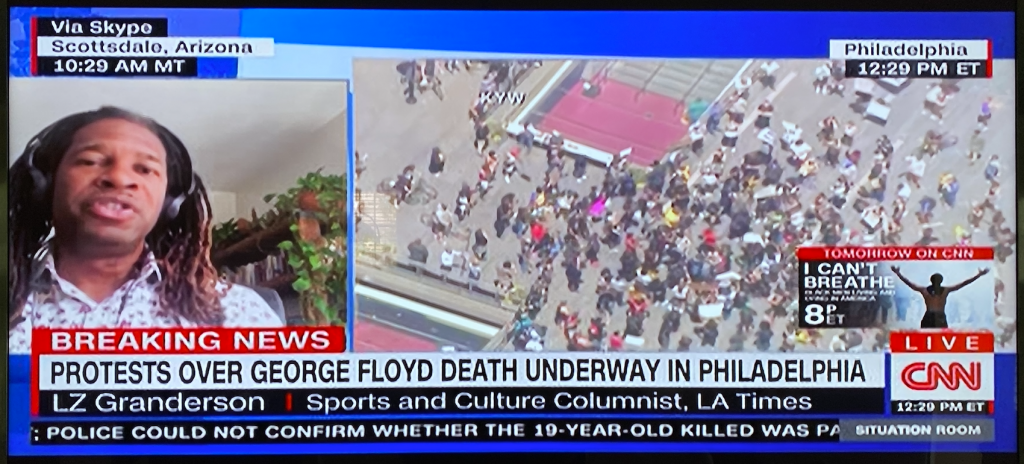
If you were watching CNN midday today then you might have heard LZ Granderson‘s interview, commenting on several days of nation-wide protests in the US that have resulted from yet another African American man dying at the hands of the police — this time a man named George Floyd, in Minneapolis. What Granderson said caught my ear, for it’s just the sort of thing that I’d hope that the students trained in our Department would not just understand but be able to use in understanding the moment in which we now find ourselves.
For on the heels of CNN’s broadcast of New York Gov. Andrew Cuomo’s daily COVID-19 press conference, during which, with regard to the protests, he commented that violence is never the answer, Granderson rightly observed that, while he agreed with such a sentiment, he also notices that it is only spoken after communities react to the initial actions of the police. That is, such a caution is never spoken in response to the original act of violence itself, in this case the actions (and, yes, inactions) of the four police officers in Minneapolis that so many of us have by now seen on video for ourselves. (At the time of writing this only one has been arrested and charged.)
Good point.
So this term “violence” is hardly an innocent descriptor of some obvious state of being; after all, when it comes to law enforcement, the official word that is used is “force,” as in using the term “use of force” to name the varying degrees of physical coercion that an officer might use to compel a person to do as they say — and among those options is, of course, so-called deadly or lethal force. Come to think of it, that very term “law enforcement” now takes on new meaning, much as the longtime habit (going back several centuries, in fact) of talking about “the police force” or “a military force” — terms that likely strike many of us today as simply naming the unit or group rather than reading them as adjectives that modify a specific mode of coercive action.
Building on Granderson’s point, many would probably not even think to caution that violence is never the answer in response to initial police actions because, by definition, they wouldn’t see them as being a form violence but, instead, a use of force — a term that effectively authorizes just some actions by helping many to see them as legitimate, necessary, called for, reasonable, etc. But if you were on the receiving end of some of the “uses of force” that I saw in news coverage from last night’s various protests across the country, then my guess is that you’d likely not have any trouble identifying the rhetorical work being done when we choose which and whose actions count as violence.
And this is what students trained in our Department hopefully “get”; for they come to understand that our faculty members use the study of religion as an opportunity to delve into one specific area of human culture and history, sure, but in order to also investigate different ways of organizing and identifying ourselves, and the different ways of authorizing each of those organizations and identifications — recognizing that words and actions are always interlinked.
So while I’ve not yet spoken to any of our majors or grad students about these latest police actions and the protests that they’ve inspired, I’m hopeful that they come to all of this with critical tools to make sense of our current moment. For, as Granderson so nicely recognizes, words are about so much more than mere vocabulary; instead, they’re all about how social groups represent, naturalize and entrench themselves — and maybe even how they can sometimes get critiqued and, perhaps, re-imagined.